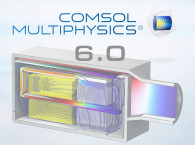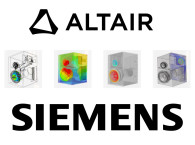
Today's industries are undergoing the most fundamental transformation in manufacturing since the introduction of the assembly line more than a century ago. Trends like the Internet of Things, additive manufacturing and machine learning are merging the physical world and the digital world, resulting in products that defy imagination. As products become smarter, companies are also changing the way they manufacture and operate products. These changes require pervasive engineering simulation, in which simulation performs a central role in all aspects of the product lifecycle — from concept, through engineering design and into operations.
Engineers can save time and money by performing simulations earlier in the design cycle, using digital exploration to explore a larger design space faster before making design decisions and locking in costs. Similarly, simulation is moving downstream into operations, where real-time simulation using digital twins is providing insight into a product's real-world performance and maintenance. ANSYS 18.2 the company's next step in delivering pervasive engineering simulation. Placing simulation into the hands of more engineers throughout the product lifecycle.
"More companies are turning to simulation to drive increasingly rapid and innovative product development and gain deeper insight into product design," says Mark Hindsbo, ANSYS vice president and general manager. "Our customers rely on ANSYS engineering simulation technology to cut costs, limit late-stage design changes, and tame the toughest engineering challenges. This latest release continues to build upon the industry's most accurate simulation portfolio, offering enhanced speed and accuracy – enabling more users, no matter their level of experience, to reduce development time and increase product quality."

Selected 18.2 Highlights
Advanced Visualization and Modelling for Better Antenna Design
In the electromagnetics suite, a new visual ray tracing capability gives engineers insight to better understand how high-frequency electromagnetic waves interact with a large-scale environment. This technology is ideal for antenna placement studies and radar scattering simulations. In addition, a new RF Link Analysis is available for modeling the quality of wireless links in the presence of electromagnetic interference (EMI) and radio frequency interference (RFI). This release also introduces new wireless propagation loss models for outdoor and indoor scenarios that include effects such as rain, atmospheric absorption, building structure absorption and statistical signal fading models for urban settings.
Increased Speed for More Robust Electronics Design
With ANSYS 18.2, engineers can quickly solve larger classes of printed circuit boards and electronic package simulations thanks to the newly incorporated Phi meshing technology in the ANSYS HFSS 3-D environment. ANSYS 18.2 provides further computational speed advancements with a new automated flow for multi-level, high-performance computing that provides users with highly scalable shared and distributed compute resources.
New Acoustics and Topology Optimization
ANSYS 18.2 delivers new solutions through expanded physics in the mechanical suite that will drastically increase product quality. Users will benefit from a new automated solution to set up drop test simulations and removes the need to make simplifications, while guiding users through the process of running an accurate simulation. ANSYS 18.2 introduces systems for engineers to study the occurrence of vibro-acoustics to better understand noise performance in products, such as motors, speakers and car exhaust systems. The ANSYS topology optimization solution has new manufacturing controls that allows engineers to reduce material cost and product weight across more applications.
Faster, More Detailed and Accurate CFD Models
In the fluids suite, designers can solve tough design problems in less time. Patented polyhedral unstructured mesh adaptation (PUMA) automatically refines mesh to resolve fine details while leaving coarser mesh in place elsewhere – drastically shortening solve times. New capabilities extend the ability of pump designers to accurately model cavitation into challenging operating conditions not previously possible, such as very high pressures and mixtures made up of multiple fluids.
www.ansys.com/products/release-highlights






